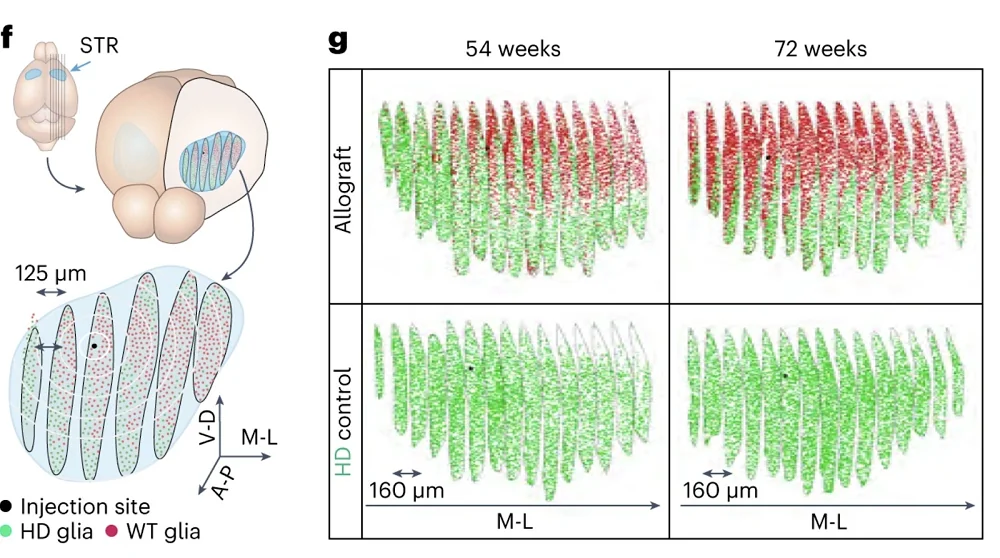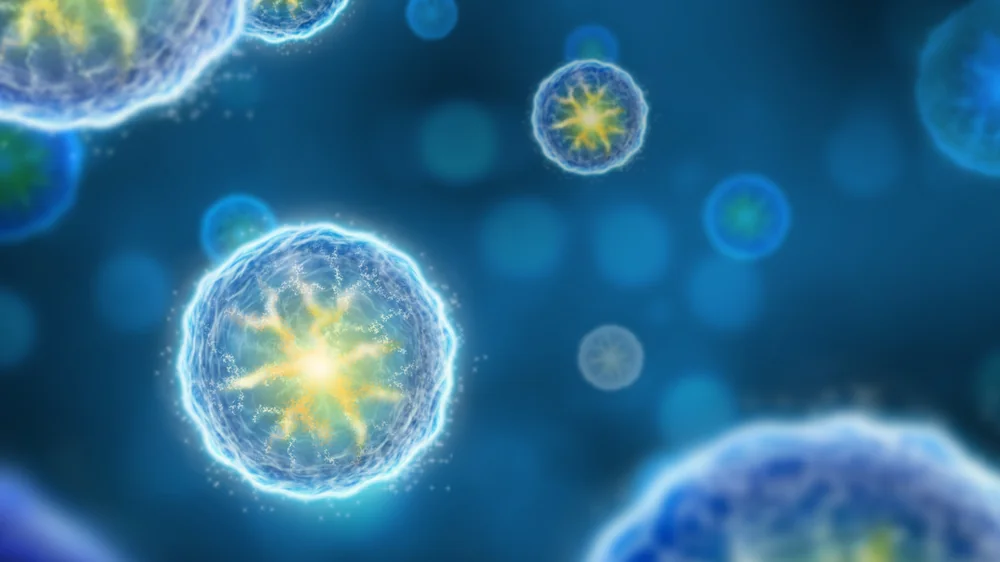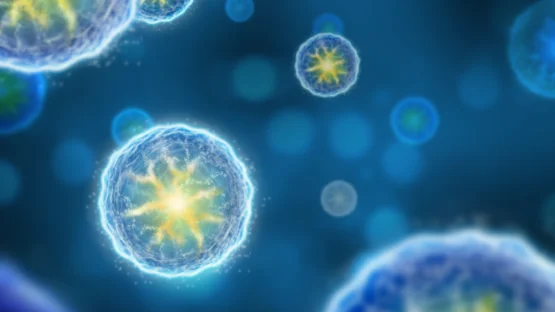In a mouse model of Huntington’s disease, scientists showed that injected young healthy brain cells can outcompete and eventually replace old, diseased ones. The results might be relevant for other neurodegenerative diseases [1].
When neurons’ helpers fail
The non-neuronal cells in the brain are collectively known as glia. This category includes astrocytes, which nourish neurons and maintain the blood-brain barrier, oligodendrocytes, which wrap axons in myelin sheaths, and microglia, the brain’s resident immune cells. Glial dysfunction drives numerous neurological conditions, such as Huntington’s disease, which causes neurons to gradually break down and die, causing progressively debilitating symptoms [2]. This disease is currently uncurable.
Glia are produced by differentiation of glial progenitor cells (GPC). In this new study published in Nature Biotechnology, the researchers tested the hypothesis that it is possible to replace diseased glia by seeding animal brains with healthy GPCs.
Glial showdown
First, the researchers had to create an appropriate model. This was done using a process known as chimerization, in which human progenitor cells are introduced into murine embryos. Scientists have perfected this technique over decades, and now they can target specific tissues and organs, such as the brain.
Mouse embryos were injected with human GPCs expressing mutated huntingtin, which causes the disease. The resulting progeny had a considerable population of human glia showing the characteristics of Huntington’s disease.
Next, after those mice have reached adulthood, the researchers seeded their brains with unmodified human GPCs. What ensued resembled a competition between the old and the new cells. Over the course of several weeks, the population of engrafted GPCs and glia that arose from them spread in the brain at the expense of resident Huntington-affected cells. The new cells, delivered to the part of the brain called the striatum, propagated from the injection site, “overpowering” their diseased counterparts:

This microscopic showdown was marked by higher proliferation rates of unmodified cells and the gradual disappearance of Huntington-affected cells. The researchers found that the unmodified cells activated several protein synthesis pathways, including the transcription factor Myc, a potent regulator of cellular growth and proliferation that is also one of the four Yamanaka factors driving cellular reprogramming. Myc is also an oncogene that, when mutated, often supports the proliferation of cancer cells [3].
This data, researchers write, suggests that the implanted unmodified human cells “actively assumed a competitively dominant phenotype upon contact with their HD counterparts, to drive the latter’s local elimination while promoting their own expansion and colonization.”
This competition between the two microglia populations indeed seemed to be triggered by their encounter: the new cells acquired their more aggressive phenotype by activating Myc and several other transcription factors only upon contact with old cells. The old cells were not just outnumbered by their young counterparts but driven to cellular death by apoptosis.
Age, not disease, is the key factor
However, another factor might have been at play: the cellular age. The engrafted unmodified cells were younger than the resident Huntington cells. When the researchers repeated their experiment on chimeric mice that carried unmodified human cells instead of Huntington cells, the results were mostly the same: young healthy cells outcompeted and replaced old healthy cells, albeit at a slightly slower pace.
The researchers suggest that “cell replacement was driven by a recapitulation of developmental cell competition, an evolutionarily conserved selection process by which less fit clones are sensed and eliminated from the tissue by their fitter neighbors.” However, here, this competition was happening in an adult brain, which is remarkable. Its exact mechanisms will have to be elucidated by future research.
The results of this study suggest a future possibility of replacing aged glia with younger cells in healthy humans. This might revolutionize our approach to age-related neurodegenerative diseases.
The clinical implications of this observation may be profound; it suggests that the dysfunctional glia of diseased brains, across a variety of disease etiologies and phenotypes, might be effectively eliminated and replaced by the intracerebral delivery of newly generated allogeneic hGPCs. However, it is important to recognize that these conclusions are based on our experiments in a model system that has inherent limitations. While we have endeavored to provide as humanized a model as feasible, by largely humanizing and to some extent aging the host glial population before later transplantation of younger WT human cells, these chimeric animals comprise an inherently artificial system.
Literature
[1] Vieira, R., Mariani, J. N., Huynh, N. P., Stephensen, H. J., Solly, R., Tate, A., … & Goldman, S. A. (2023). Young glial progenitor cells competitively replace aged and diseased human glia in the adult chimeric mouse brain. Nature Biotechnology, 1-12.
[2] Walker, F. O. (2007). Huntington’s disease. The Lancet, 369(9557), 218-228.
[3] Dang, C. V. (2012). MYC on the path to cancer. Cell, 149(1), 22-35.




